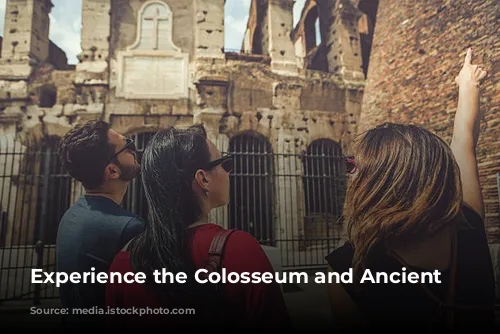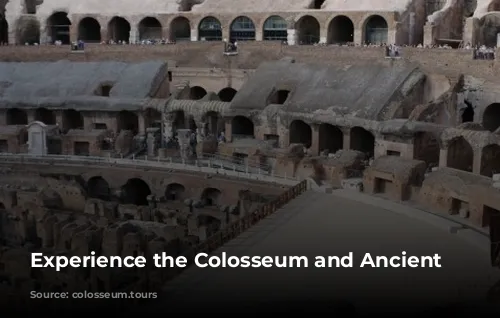Welcome to the Eternal City, Rome! Prepare for an unforgettable journey through time as you explore the captivating Colosseum and the ancient marvels surrounding it.
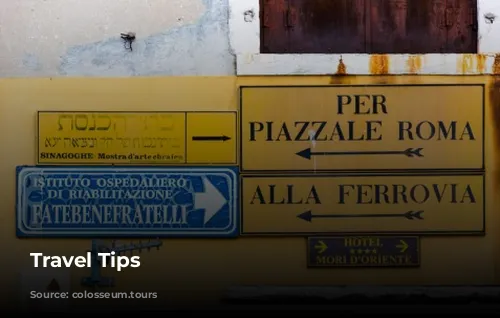
Discover the Colosseum
The Colosseum is a testament to the power and grandeur of the Roman Empire. This iconic amphitheater, built around 70-80 AD, was the stage for gladiatorial contests, animal hunts, and even mock naval battles. Imagine the thrill of 80,000 spectators roaring as gladiators clashed in this impressive arena!
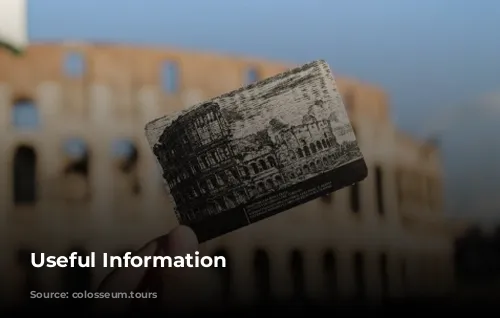
Planning Your Visit
When planning your visit, be sure to check the Colosseum’s opening hours, which vary depending on the season. Here’s a quick breakdown:
- January 2 to February 15: 8:30 AM – 3:30 PM
- February 16 to March 15: 8:30 AM – 4:00 PM
- March 16 to last Saturday of March: 8:30 AM – 4:30 PM
- Last Sunday of March to August 31: 8:30 AM – 6:15 PM
- September 1 to September 30: 8:30 AM – 6:00 PM
- October 1 to last Saturday of October: 8:30 AM – 5:30 PM
- Last Sunday of October to December 31: 8:30 AM – 3:30 PM
Pro Tip: Book your tickets in advance to avoid long lines and ensure your entry into this iconic attraction. This also allows you to choose your preferred date and time slot, making for a smoother and more efficient visit.
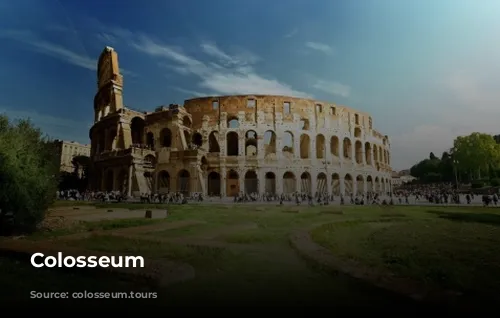
Exploring the Colosseum
The Colosseum’s design is a marvel of ancient Roman engineering. This massive oval-shaped structure, standing at an impressive 48 meters tall, features four levels. It’s built from limestone, concrete, and bricks and adorned with three tiers of arches, each featuring different types of columns: Doric at the bottom, Ionic in the middle, and Corinthian at the top.
The Colosseum’s clever design included ramps, stairs, and tunnels, ensuring easy movement for both people and animals during events. This clever design made it efficient for spectators to enter and leave, and for shows to be staged, showcasing the Romans’ skill in architecture.
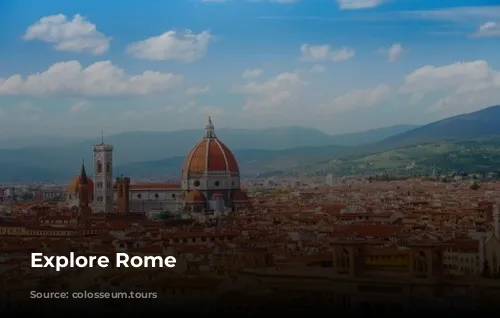
Experiencing the Colosseum at Night
As night falls, the Colosseum lights up, casting a majestic glow against the dark sky. It’s a captivating sight, reminding us of its thrilling history. The Colosseum’s beauty and the peaceful atmosphere around it are a wonderful way to connect with ancient Rome’s rich past.
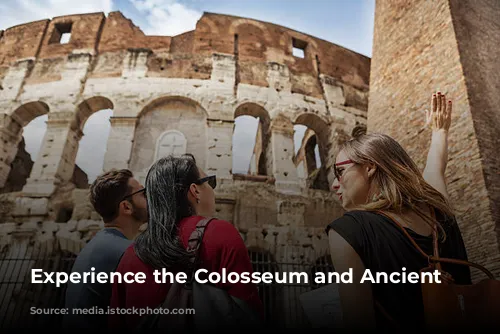
What to Wear and What to Bring
Wear comfortable shoes to navigate Rome’s charming streets and historical sites. You’ll be doing a lot of walking, so comfortable footwear will ensure you enjoy every minute of your exploration.
When visiting the Colosseum, there are certain items that are not permitted inside. These include:
- Large bags/backpacks or any kind of wheeled/roller bags
- Glass containers/bottles
- Weapons (including pocket knives)
- Aerosol sprays
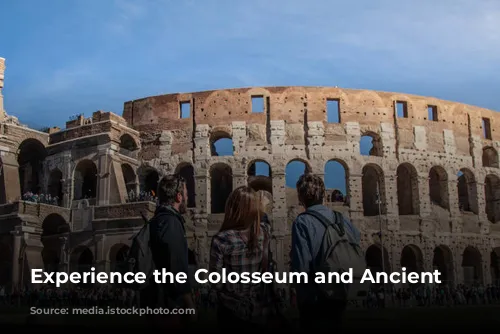
Enjoy the Flavors of Rome
Indulge in authentic Roman cuisine, particularly the delicious street food. Seek out spots frequented by locals, a sign of delicious and high-quality fare.
When dining in Rome, it’s customary to leave a 10% tip if you’re particularly pleased with the service or if the bill doesn’t include a service charge.
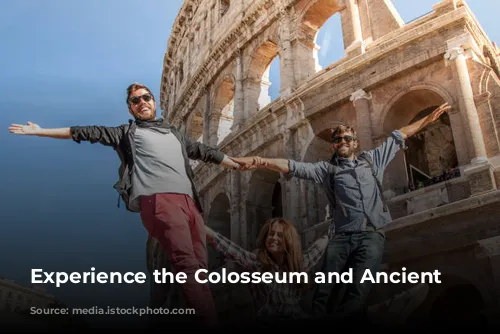
Guided Tours for an Unforgettable Experience
Join a guided tour to truly immerse yourself in the history and grandeur of the Colosseum and Ancient Rome. A knowledgeable local guide will lead you through the highlights of these iconic landmarks, sharing captivating stories and fascinating insights.
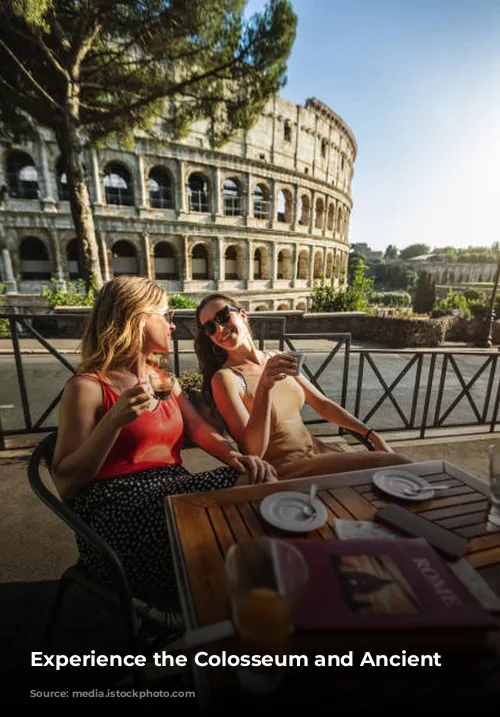
Discover the Ancient City
Start your guided tour at the impressive Colosseum, learning about its architecture and the Romans’ love for games. Then, walk onto the arena floor, where gladiators once fought. Next, venture to Palatine Hill, the oldest part of Rome, where Emperors once lived in grand homes. Wander among the ruins, enjoying the serene surroundings and breathtaking views. Finally, descend into the Roman Forum, walking along ancient roads and marvelling at temples, offices, and the senate building.
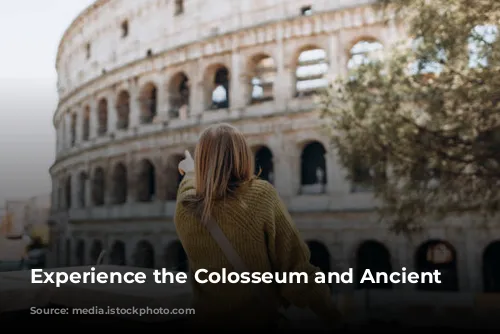
Vatican City: A Center of Global Reverence
No trip to Rome is complete without visiting the Vatican, the center of the Roman Catholic Church. Explore the Vatican Museums, a treasure trove of art, including iconic works by Michelangelo and Raphael.
The Sistine Chapel is a must-see, home to Michelangelo’s breathtaking frescoes on the ceiling. St. Peter’s Basilica, with its awe-inspiring architecture and religious significance, will leave you speechless.
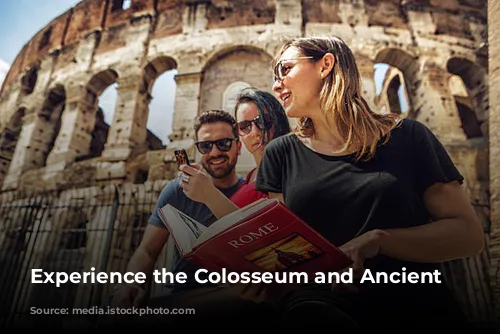
Explore the Local Neighborhoods
Step back in time and discover the vibrant life and rich history of Rome’s charming neighborhoods, like Trastevere and Monti.
Trastevere exudes a bohemian charm with its narrow cobblestone streets, colourful buildings, bustling piazzas, lively trattorias, and exciting nightlife.
Monti offers a more eclectic ambiance, blending ancient ruins with trendy boutiques, artisanal shops, and hidden gems. Its labyrinthine alleys lead to quaint cafes and artist workshops, making it a haven for creatives.
Both neighborhoods are perfect for leisurely strolls and soaking up the authentic atmosphere.
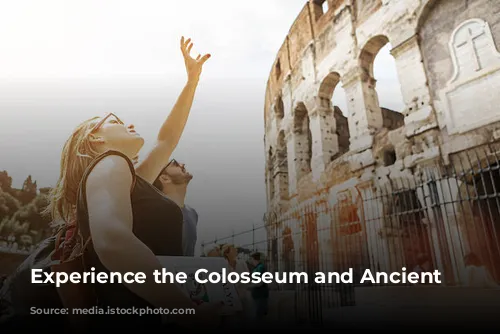
Free Museum Entry on the First Sunday of the Month
Every first Sunday of the month, entry to state-owned museums, galleries, parks, and some archaeological sites in Rome is free. However, due to the high number of visitors, consider arriving early.
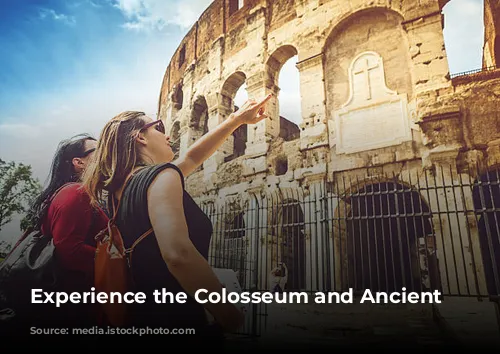
The Colosseum: A Symbol of Roman Power
The Colosseum is not only Rome’s most visited monument, but also the most popular in all of Italy. It stands as an icon of the ancient Roman Empire, much like the Eiffel Tower in Paris.
In its day, the Colosseum was a symbol of the ancient Romans’ power, might, and ambition. This magnificent structure was a testament to their ingenuity and their love for grand spectacles. Today, it remains a powerful reminder of the enduring legacy of Rome.
